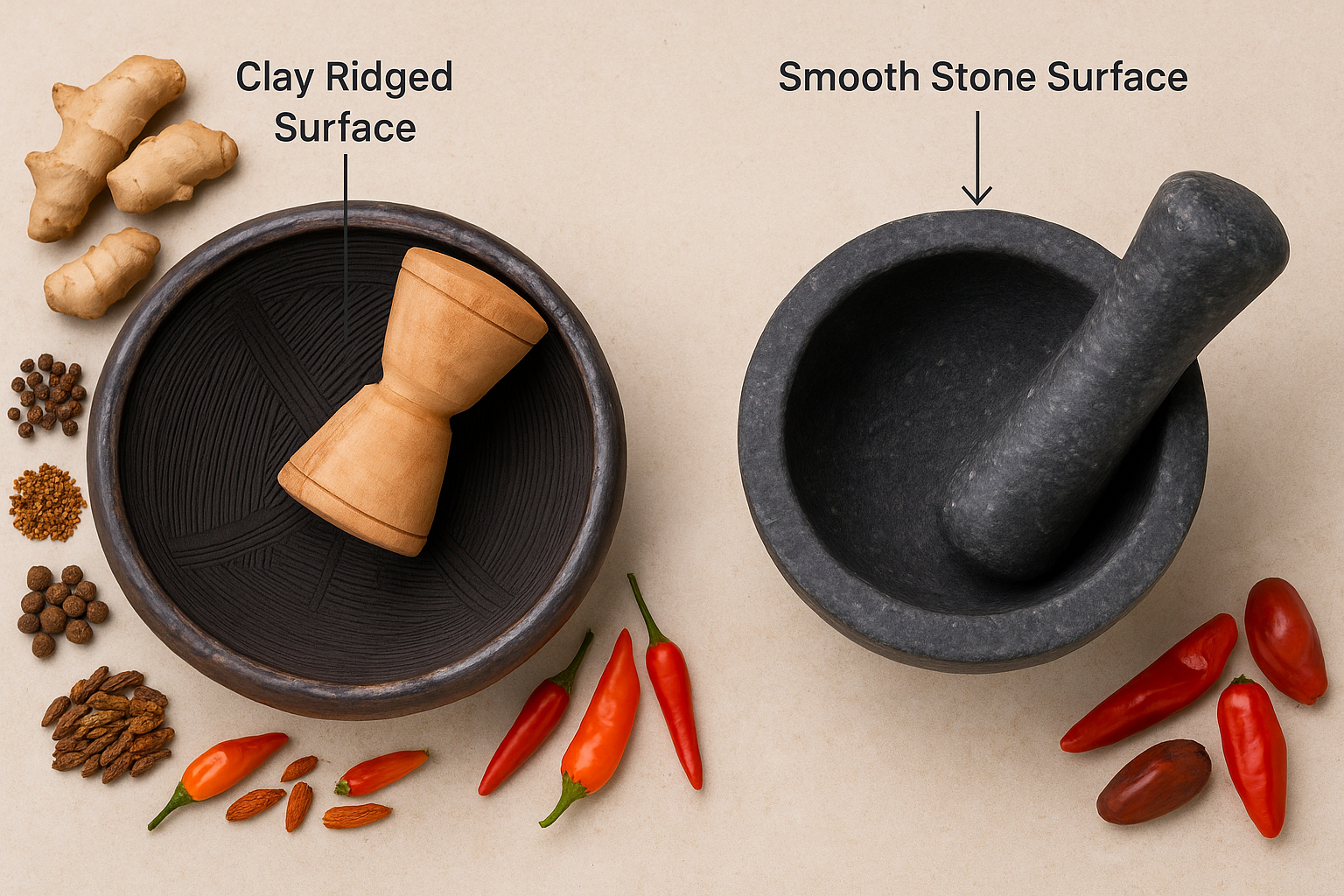Asanka vs Mortar and Pestle: What’s the Difference and Which Should You Use?
If you love big flavor and rustic texture, you’ve likely considered both the Ghanaian Asanka and a classic mortar and pestle. This guide breaks down key differences—materials, texture, technique, and best-use cases—so you can choose confidently. By the end, you’ll know when the clay grinding bowl shines and when a stone or marble set is the better pick.
Related article: How to Use an Asanka Bowl: The Traditional Ghanaian Way of Grinding and Cooking

Buy authentic readymade Asanka Traditional Pot with Grinder now!
https://africandelightstore.com/products/copy-of-asanka-set-of-10
Quick Overview
| Feature | Asanka (Ghana) | Mortar & Pestle (Stone/Marble) |
|---|---|---|
| Material | Porous clay bowl with ridged interior; wooden tapoli pestle | Dense stone or marble; smooth interior; stone pestle |
| Texture Output | Smoky, rustic, gently coarse sauces; enhanced aromatics | Fine pastes and powders; high mechanical force |
| Best For | Pepper sauces, tomato bases, spice mash for stews | Dry spices, nuts, seeds; pesto-like pastes |
| Learning Curve | Rhythmic grinding; add softer items last | Pound + swirl; stable base matters |
| Care | Rinse warm water; avoid soap; air-dry fully |
Rinse; occasional salt scrub to deodorize |
Related article: The Ultimate Guide to the Asanka: Ghanaa Timeless Clay Grinding Bowl for Modern Kitchens
What Makes the Asanka Unique?
- Ridged clay surface: Grips ingredients for fast breakdown without over-pureeing.
- Flavor lift: Porous clay helps bloom aromatics; sauces taste rounder and less “metallic.”
- Versatility: From chili-tomato pepper sauce to spice mashes for stews and grills.
When a Mortar & Pestle Wins
- Powders & pastes: Peppercorns, seeds, nuts—stone delivers ultra-fine textures.
- High force: Dense ingredients (e.g., cardamom husks) crack quickly.
- Neutral surface: Useful when you want minimal flavor absorption.
Buy authentic readymade Asanka Set of 10 now!
https://africandelightstore.com/products/asanka-set-of-10
How to Choose: A Simple Decision Guide
If you want smoky, rustic sauces with visible body…
Pick the Asanka. It excels at tomato-chili bases, shito, and everyday stew starters.
If you need extremely fine spice powders or nut pastes…
Pick a stone mortar & pestle. It’s unmatched for dry grinding and emulsified pastes.
Best of Both Worlds?
Keep both. Use the Asanka for wet sauces and finishing mashes; use stone for dry spices, then fold the powder into your Asanka sauce for maximum aroma.
Technique Tips (Faster, Cleaner, Tastier)
- Order of ingredients: Tough → soft. Start with garlic/ginger/pepper, add tomato last.
- Blooming: A teaspoon of hot oil swirled in the Asanka amplifies aroma.
- Consistency control: Water or oil by the teaspoon; stop when glossy, not watery.
- Care: Rinse warm, no soap; dry fully. Avoid metal scrapers on clay ridges.
Related article: Asanka Bowl Care Guide: How to Clean and Maintain Your Clay Grinding Bowl
FAQs
Is the Asanka just another mortar and pestle?
No—its clay grinding bowl with ridges changes friction and texture, giving sauces a distinct body and aroma typical of Ghanaian cooking.
Can I grind dry spices in the Asanka?
Yes, but stone is faster for powders. Many cooks crack spices in stone, then blend the paste in the Asanka for flavor.
Conclusion: Asanka vs Mortar and Pestle—Which Is Better?
For rustic sauces and everyday West African flavors, the Asanka is a star. For ultra-fine spice work, stone wins. Most home cooks benefit from both—start with the Asanka if your priority is sauce flavor and texture.
Related article: The Art of Grinding: How the Asanka Enhances Flavor Naturally

Try the Asanka—Taste the Difference
Continue with our asanka vs mortar and pestle comparison, or head to the product page to order yours.



